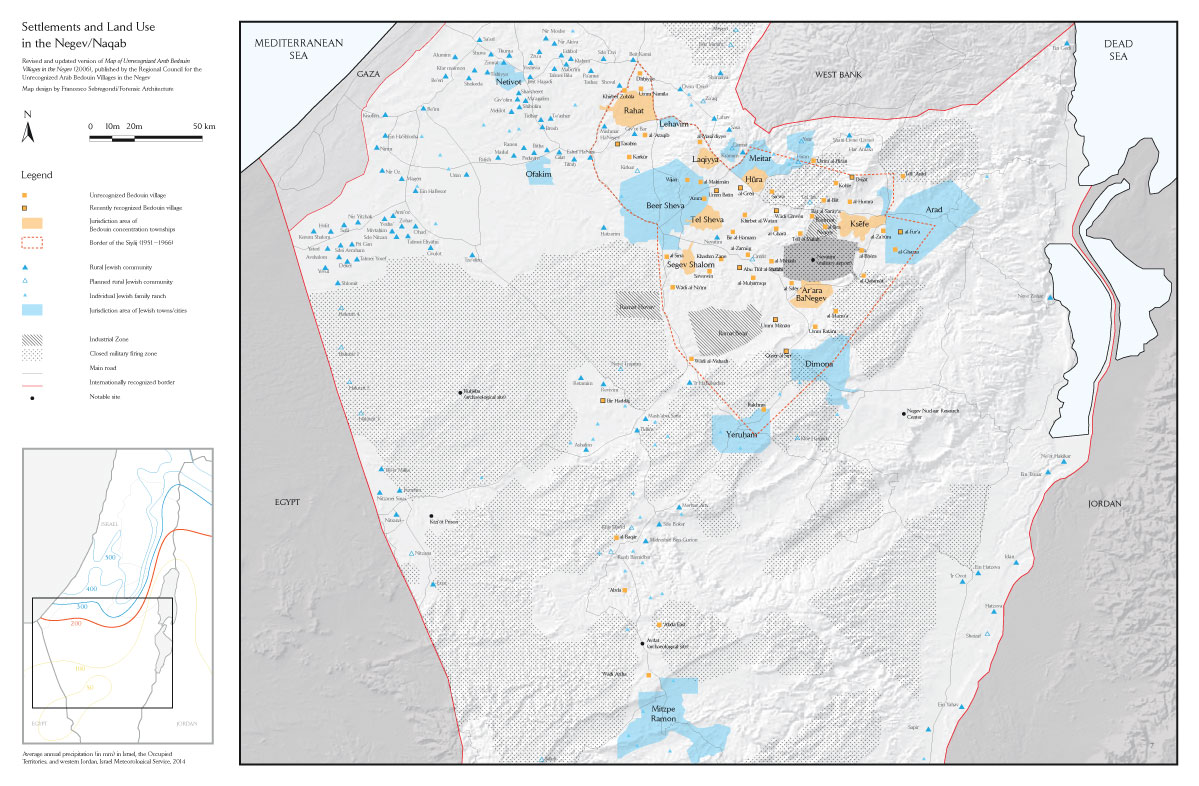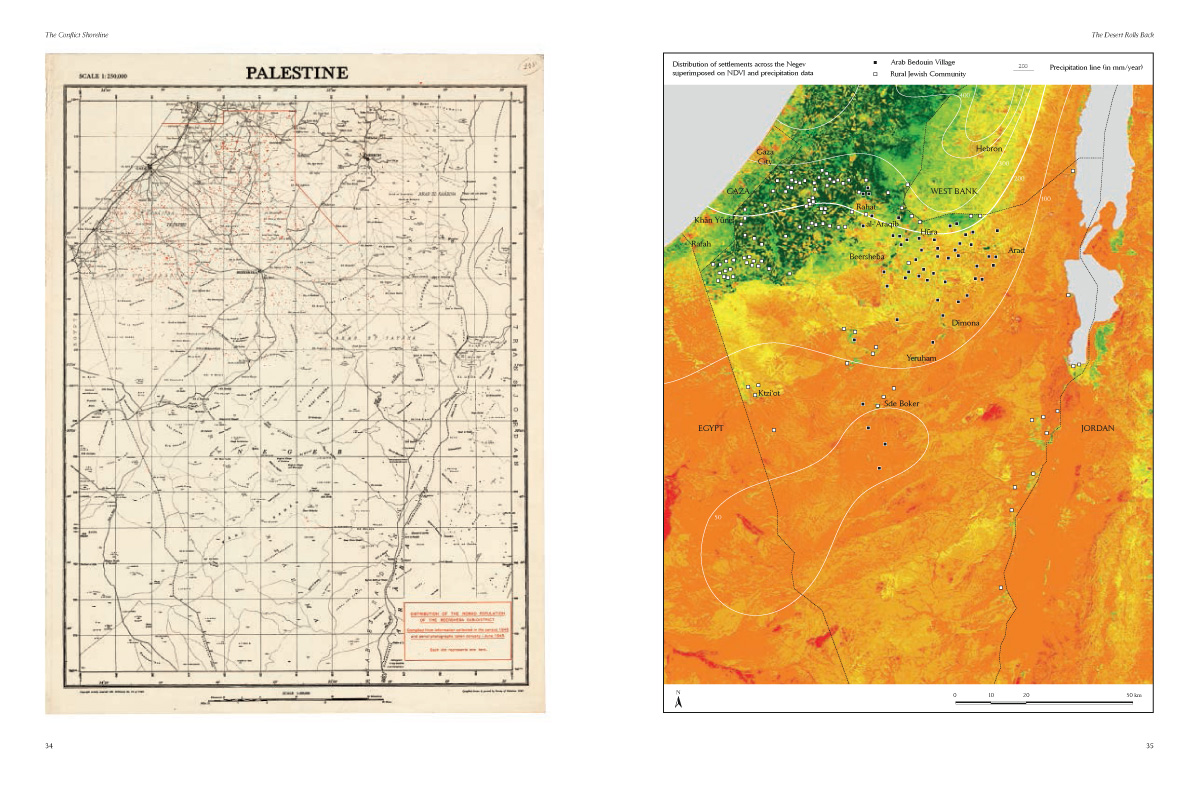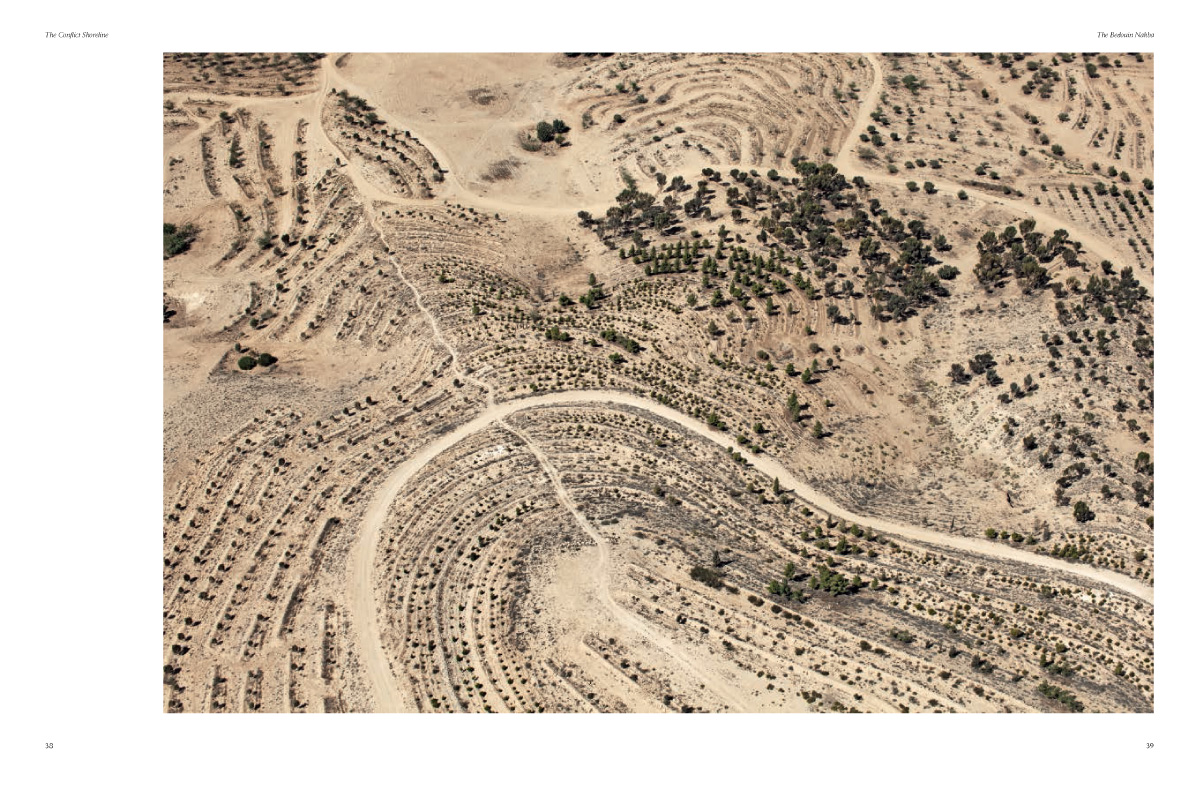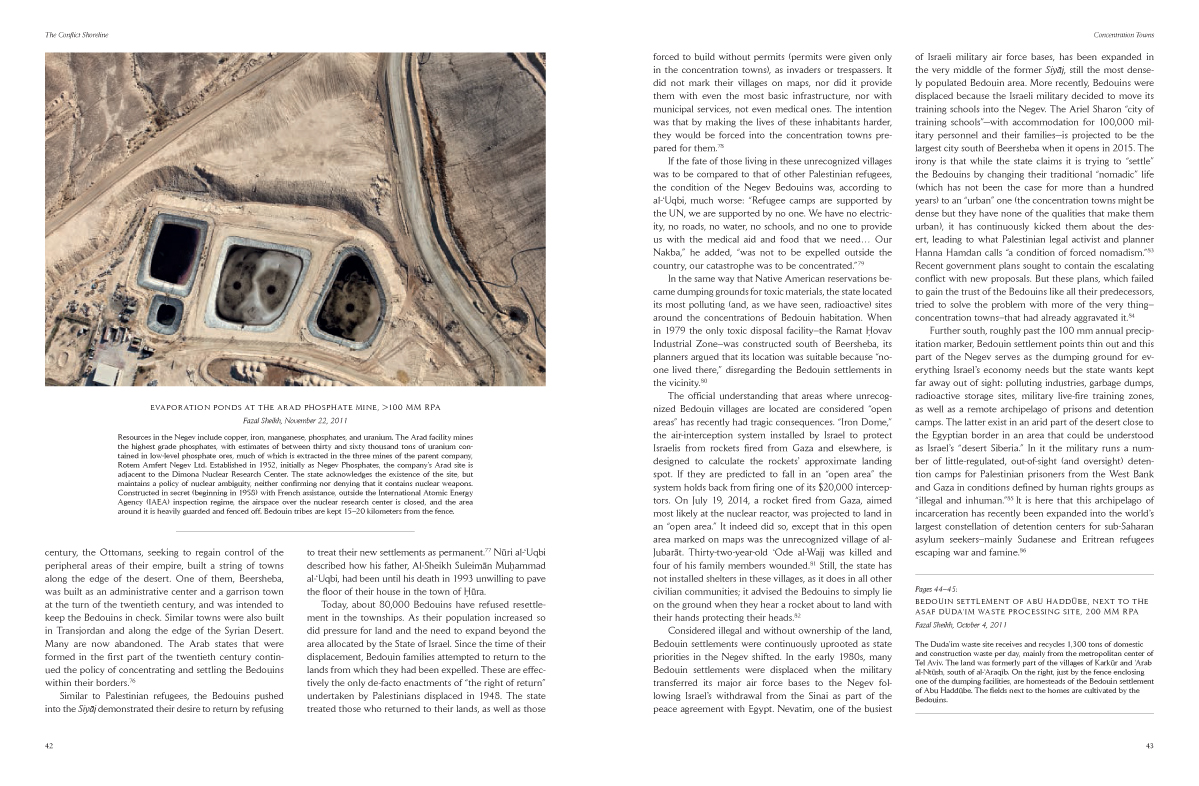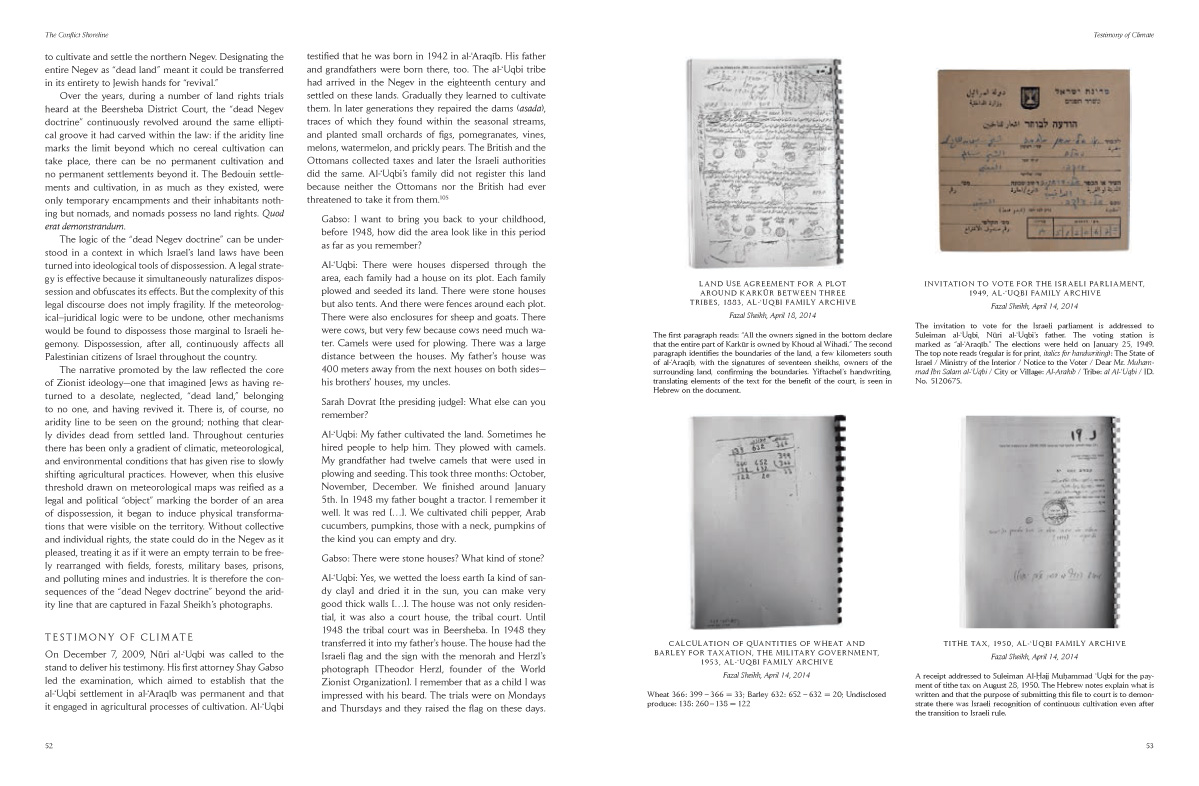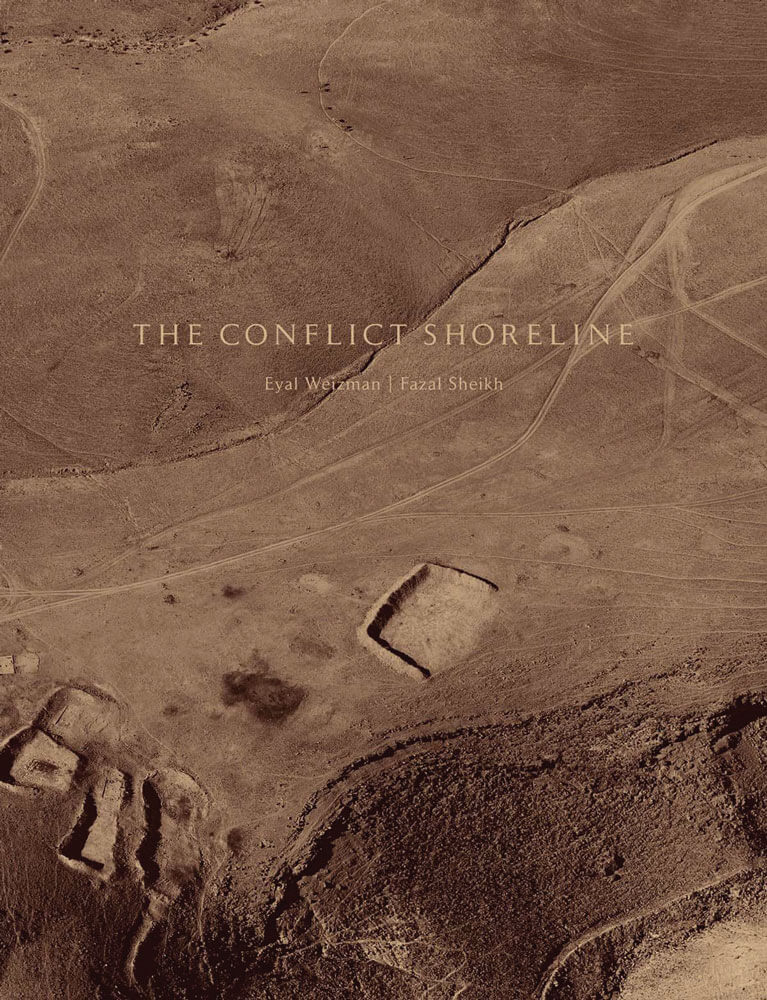
The Conflict Shoreline: Colonization as Climate Change in the Negev Desert by Eyal Weizman (text) and Fazal Sheikh (photographs)
Hardcover, 96 pages, 8 (w) x 10.5 (h) inches
Color and black-and-white illustrations
Published by Steidl in association with Cabinet Books, 2015
The PDF has been uploaded by a third party here.
The village of al-‘Araqib has been destroyed and rebuilt more than seventy times in the “battle over the Negev,” an ongoing Israeli state campaign to uproot the Bedouins from the northern threshold of the desert. Unlike other frontiers fought over during the Israel–Palestine conflict, however, this threshold is not demarcated by fences and walls but advances and recedes in response to cultivation, colonization, displacement, urbanization, and climate change.
The fate of al-‘Araqib, like that of other Bedouin villages along the desert’s threshold, its “aridity line,” is bound up with deep environmental changes. But whereas even the most committed environmentalists today conceive of climate change as an accidental and unintentional side effect of modernity, Israeli architect and theorist Eyal Weizman argues that from the point of view of colonial history, climate change has never been simply collateral damage. It has always been a stated goal; “making the desert bloom” is, in effect, “changing the climate.”
In examining this history, Weizman outlines attempts—from the Ottoman era through the period of European colonization to the present—to scientifically define, measure, and map the threshold of the desert. Such efforts have been important because imperial and, later, national governments—whose laws have never recognized property rights in the desert—aimed to push back this threshold as they tried to expand the limits of arable land and bring the nomads under state control. In the Negev, the displacement of the weather and the displacement of the Bedouins have gone hand in hand. But while the desert edge, and the Bedouins, have been driven further and further south, global climate change today acts as a major counterforce. Predictably, the Bedouins are caught in the middle.
Brilliantly researched and argued, Weizman’s text—part detective story, part history lesson, and part scientific analysis—explores the changing threshold of the Negev through the extraordinary contemporary photographs of American artist Fazal Sheikh, as well as an array of documents, maps, and images, including historical aerial imagery, remote sensing data, state plans, court testimonies, and nineteenth-century travelers’ accounts. Together, these disparate forms of evidence establish the “conflict shoreline” as a border along which climate change and political contestation are deeply, perilously entangled.
This book has been submitted as evidence for the “Truth Commission on the Events of 1948–1960 in the Negev,” an initiative of the Israeli–Palestinian
organization Zochrot.
About Eyal Weizman
Eyal Weizman is Professor of Spatial and Visual Cultures at Goldsmiths, University of London, where he directs the Centre for Research Architecture as well
as the Forensic Architecture research project. An editor-at-large of Cabinet, Weizman is a Global Scholar at Princeton University and a founding
member of Decolonizing Architecture Art Residency (DAAR) in Beit Sahour, Palestine.
About Fazal Sheikh
Fazal Sheikh is an artist whose work typically uses photographs to document people living in displaced and marginalized communities around the world. In
2005, he was named a MacArthur Fellow, and in 2012, a Guggenheim Fellow.
For more on recent legal developments concerning the Bedouins in the Negev, see:
—Shirly Seidler, “Supreme Court allows state to replace Bedouin village with Jewish one,” Haaretz, 6 May 2015. Available at www.haaretz.com/news/israel.
—“Court-approved dispossession of Israeli Bedouin,” (editorial), Haaretz, 13 May 2015. Available at http://www.haaretz.com/opinion.
—Diaa Hadid, “Village of Bedouins Faces Eviction as Israel Envisions a Village of Jews,” The New York Times, 16 May 2015. Available at www.nytimes.com/2015/05/17/world.
—Mairav Zonszein, “Israel Supreme Court: Bedouin have no indigenous rights,” +972, 29 May 2015. Available at http://972mag.com/israel-supreme-court-bedouin-have-no-indigenous-rights.
See press on “The Conflict Shoreline” in Muftah, the Los Angeles Review of Books, and Public Seminar.
